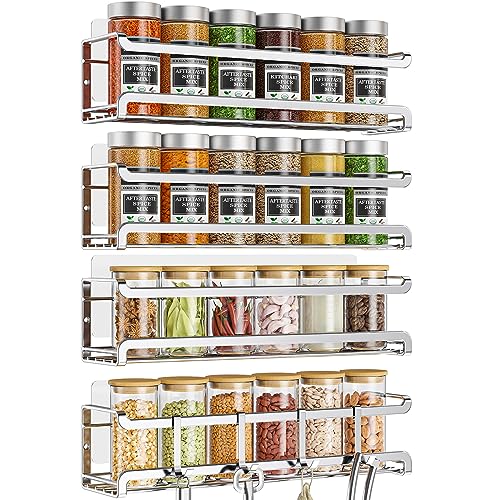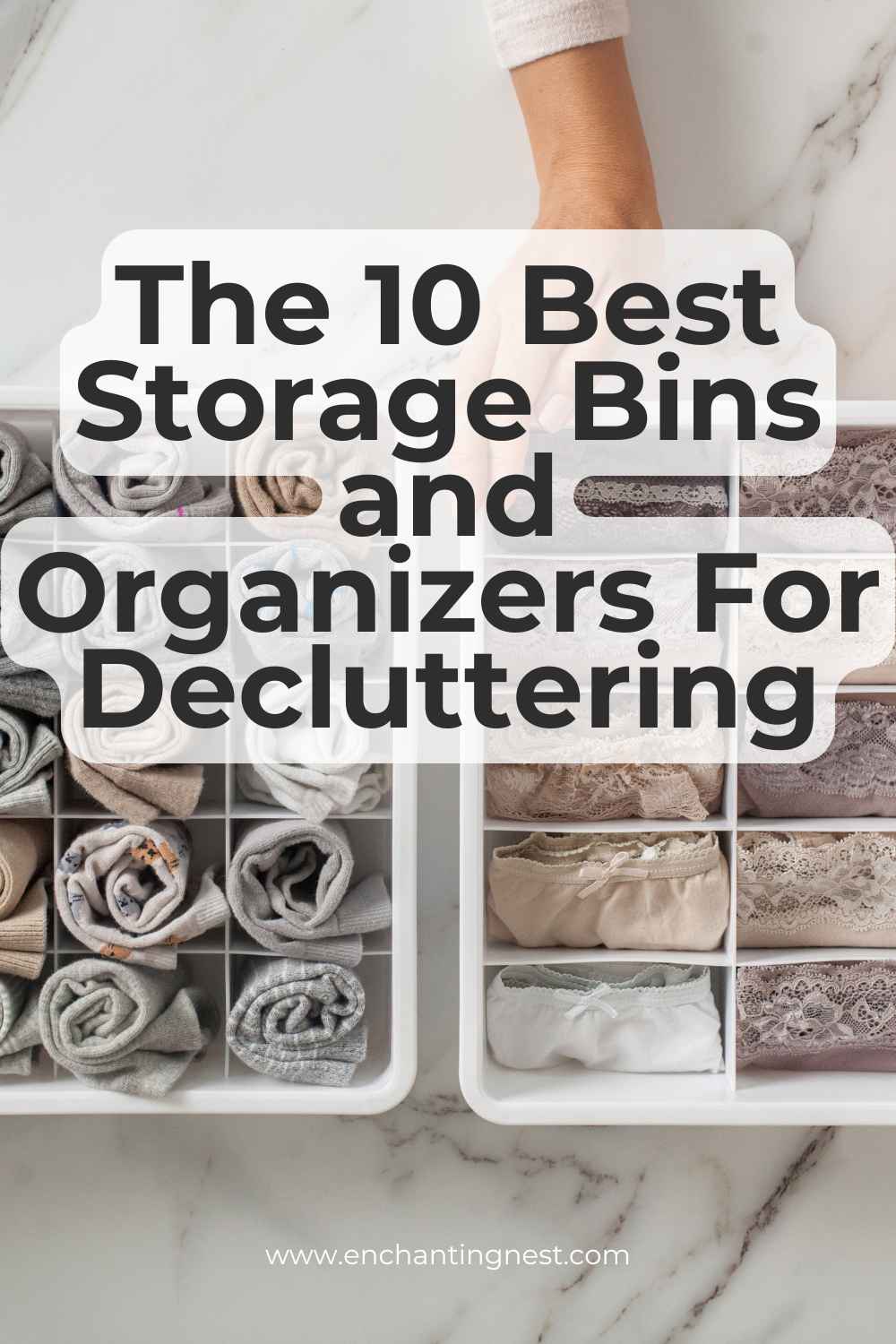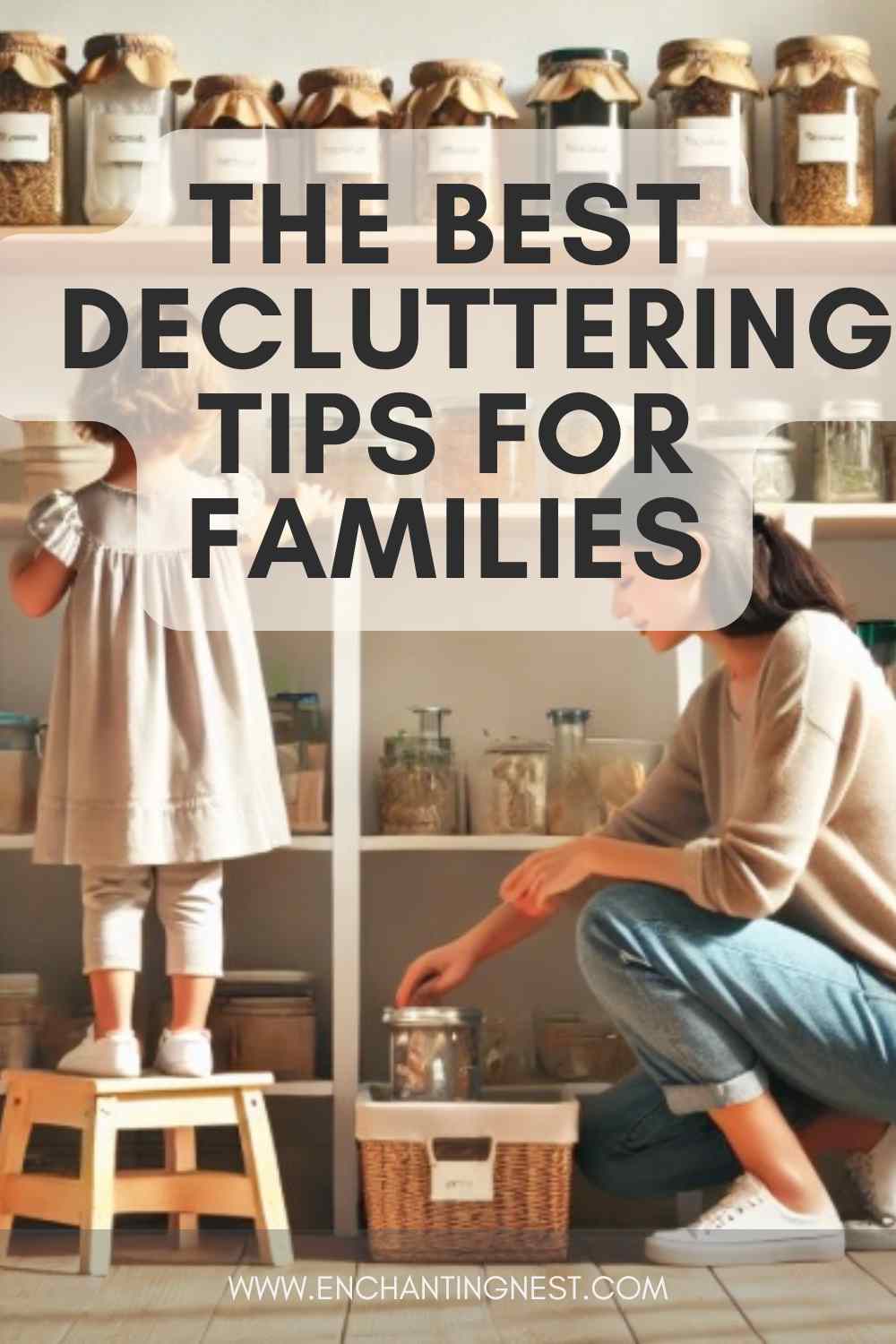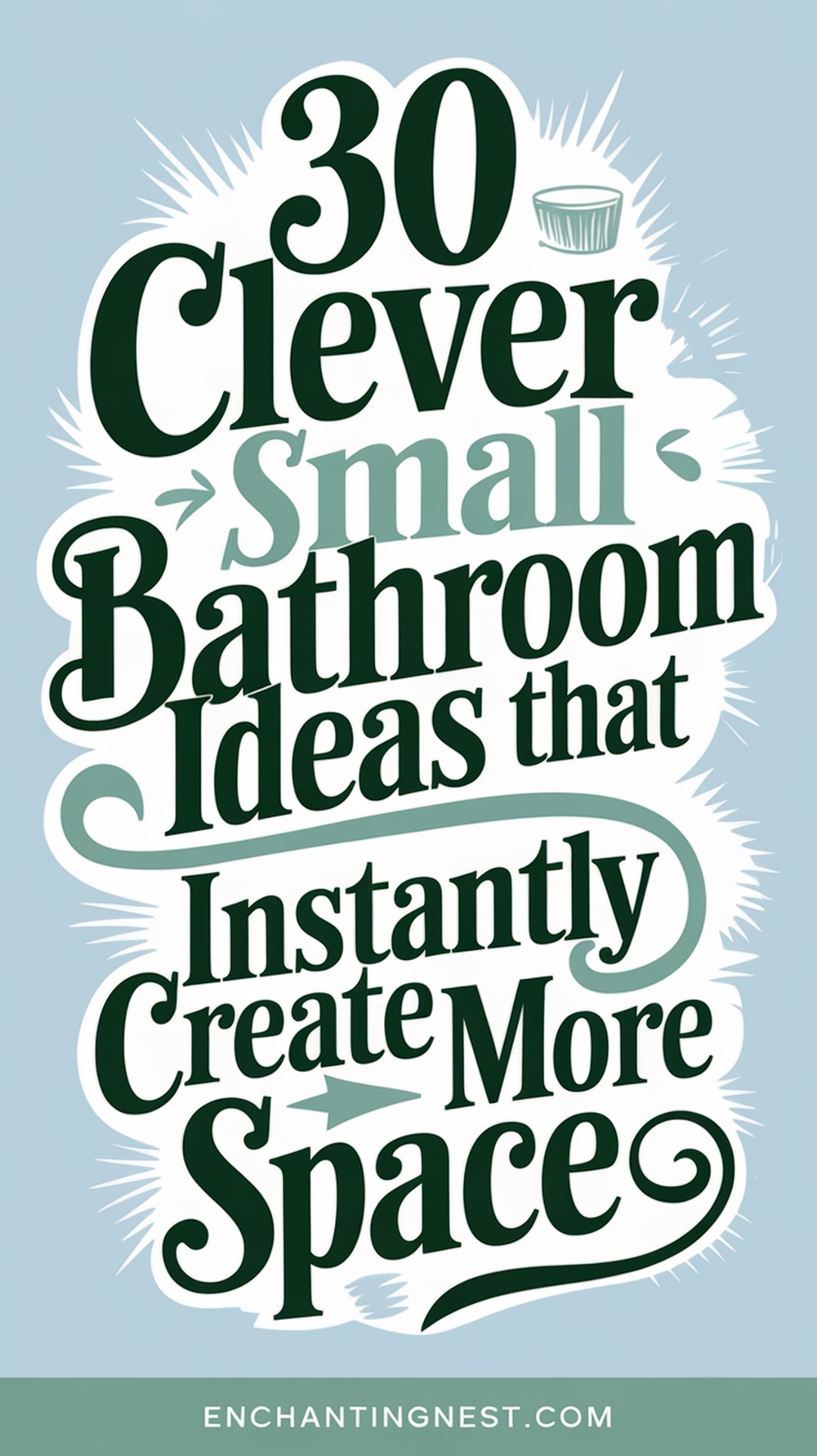Pantry Organization Ideas: 15 Smart Solutions for a Clutter-Free Kitchen
Walking into a well-organized pantry feels like a breath of fresh air. As a mom of five kids who are constantly raiding the kitchen, I’ve learned that pantry organization ideas aren’t just nice—they’re essential for my sanity! When I transformed my chaotic pantry into an organized space, it changed my daily cooking routine. Whether you have a spacious walk-in or a humble cabinet, effective pantry organization can transform your kitchen experience. Did you know that the average American wastes about 30% of their food supply, with disorganized storage being a major culprit?
In this guide, I’ll share pantry organization ideas to help you maximize space, reduce waste, and make cooking more enjoyable. This is just one room in your decluttering journey toward a minimalist home. Your future self will thank you when you can find ingredients without digging through messy shelves.

How to Choose the Right Pantry Organization Ideas for Your Family
Before diving into specific solutions, consider these factors when selecting pantry organization ideas:
- Family needs: As a mom of 5, I’ve learned different ages require different access levels
- Usage patterns: Identify which items your family uses most frequently
- Pain points: Focus on solving your specific challenges, not just creating a pretty space
- Accessibility: Ensure everyone who needs access can reach appropriate items
- Maintenance level: Choose systems that are realistic for your family to maintain
Understanding Your Pantry Space
Before buying containers and labels, assess your pantry situation. I learned this after buying storage bins that were too big for my shelves.
Take measurements of your pantry’s dimensions, including shelf height and depth. Write these down as you’ll need them when shopping for containers.
Identify what’s not working in your current setup. Are cans getting lost in the back? Do bags of chips fall over? Is your baking stuff mixed with pasta? These pain points will guide your reorganization.
Consider your family’s eating habits. If you have kids who need easy access to snacks, or if you’re big on baking, your organization system should reflect those needs.
Take inventory of everything in your pantry. This helps you understand what storage solutions you’ll need and reveals expired items that should be discarded.
Think about visibility versus hidden storage. Some items work well in clear containers, while others might be better tucked away in baskets.
Clear Out and Categorize: The Essential First Step
Empty your entire pantry before reorganizing. When I tried to organize “as I went,” it took twice as long with poorer results.
Take everything out and place items on your counter or table. This gives you a clean slate and shows you exactly what you have. I found three opened bags of flour hiding in different corners during my last reorganization.
Check expiration dates thoroughly and discard old items. I typically remove about 15-20% of my pantry items during this phase.
Group similar items together by categories that make sense for your cooking style:
- Baking supplies (flour, sugar, baking powder)
- Breakfast items (cereal, oatmeal, pancake mix)
- Canned goods (vegetables, soups, beans)
- Snacks (chips, crackers, popcorn)
- Pasta and grains (rice, quinoa, noodles)
- Cooking oils and vinegars
- Spices and seasonings
Place frequently used items at eye level and store specialty ingredients on higher or lower shelves.
While your pantry is empty, clean all shelves, vacuum crumbs, and add fresh shelf liner if desired. I once found mouse droppings during cleaning, which motivated me to invest in sealed containers.
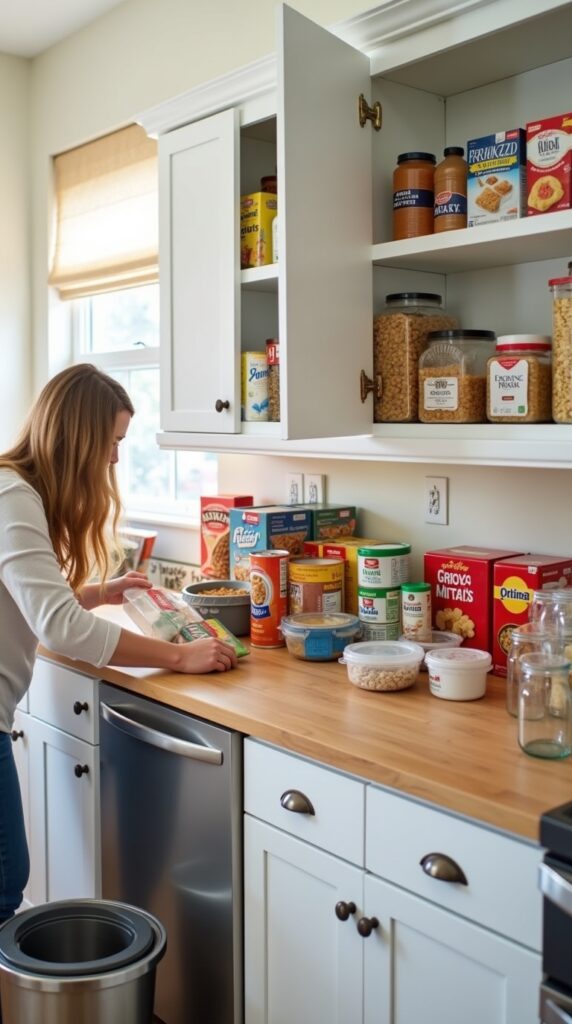
Smart Container Solutions for Pantry Organization
Quality containers transformed how my pantry looked and how I cook and shop. For dry goods, look for containers with tight seals to keep food fresh and pests out. I found this important after discovering bugs in my rice.
When choosing containers, follow these guidelines:
- Look for clear sides to see contents at a glance
- Choose stackable designs to maximize vertical space
- Ensure airtight seals for freshness
- Select appropriate sizes for your specific needs
- Consider ease of opening for all family members
Matching containers create a cohesive look, but mixed containers still work fine functionally if that’s what fits your budget.
Labels help everyone know what’s what and where items belong. Include expiration dates on labels to prevent using stale ingredients.
For awkward packaging like snack bars or tea bags, use bins to keep them together and prevent scattering.
Maximizing Vertical Space with Clever Shelving
Most pantries have more usable space than we realize if we think vertically.
Adjustable shelving allows you to customize heights to match what you store. Shelf risers create “stadiums” for canned goods so you can see items in the back row.
For deep shelves, pull-out drawers or sliding organizers make items accessible. These were worth the investment for me, preventing forgotten food and waste.
Don’t overlook cabinet doors. This space works well for narrow items. I installed a door-mounted spice rack that freed up an entire shelf.
Corner spaces can be utilized with rotating lazy Susans, perfect for oils, vinegars, and sauces that otherwise get lost.
Budget-Friendly DIY Pantry Organization Ideas
Effective organization doesn’t require expensive solutions. Mason jars or reused pasta sauce jars work well for storing beans, grains, or homemade items.
Tension rods create dividers for baking sheets and cutting boards, allowing them to stand upright instead of stacking.
Magazine holders from dollar stores organize boxes of plastic wrap, aluminum foil, and parchment paper.
More budget-friendly ideas include:
- Shoeboxes covered in contact paper for storage bins
- Binder clips to keep bags sealed
- Shower curtain rings on a tension rod for hanging snack bags
- Empty soda boxes to organize canned goods
- Command hooks for hanging measuring cups or towels
Wine racks repurposed for water bottles save space by storing bottles vertically rather than horizontally.
Smart Storage Solutions for Specific Items
Certain items need specialized solutions to stay organized.
For canned goods, tiered organizers create visibility. This prevents buying duplicates because you couldn’t see what you already had.
Hanging baskets work well for fruits and vegetables that don’t need refrigeration, freeing up counter space and keeping produce visible.
Spices need a system where you can see all options at once. I use uniform jars with labels on the tops in a drawer, but door-mounted racks or carousels work too.
A designated snack station with open bins at kid-height allows children to access parent-approved snacks independently, reducing interruptions.
For baking supplies, create a zone with flour, sugar, and leavening agents together, with measuring tools nearby. This makes baking projects more efficient.
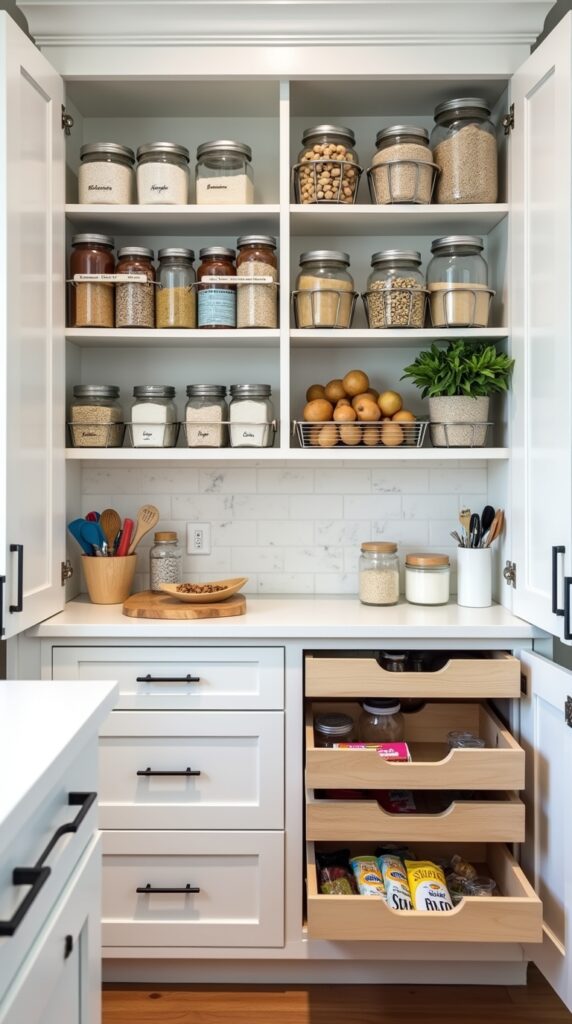
Maintaining Your Organized Pantry
Staying organized requires simple systems that become habits. Follow these steps:
- Implement the “first in, first out” (FIFO) rotation system
- Schedule regular pantry check-ins (15-minute weekly reset, deeper quarterly clean)
- Create a consistent shopping list system
- Train family members using clear labels and intuitive organization
Remember that perfection isn’t the goal – functionality is. Create a system that works for your real life, not just for appearances.
Frequently Asked Questions About Pantry Organization Ideas
How often should I reorganize my pantry?
A complete reorganization once yearly works well, with mini-cleanouts every 3 months to check for expired items. Seasonal changes in eating habits make the beginning of each season a natural time to reassess.
What are the best containers for pantry organization?
Clear, airtight containers with secure lids work best. For dry goods, choose containers with wide openings for measuring cups. Rectangular containers maximize space better than round ones. The most effective options combine airtight seals, stackability, and durability.
How can I organize a small pantry with limited space?
Maximize vertical space with shelf risers, stackable containers, and door organizers. Consider what truly needs to be in your pantry versus what could be stored elsewhere. Implement a “one in, one out” policy to prevent overcrowding.
What’s the most cost-effective way to organize a pantry?
Repurpose items you already have like jars, boxes, and containers. Dollar stores offer affordable bins and baskets. Simple solutions like tension rods, command hooks, and binder clips solve specific problems inexpensively.
How do I maintain pantry organization with kids in the house?
Create a designated “kid zone” with accessible, healthy snacks. Use picture labels for young children and keep systems simple. Involve children in maintaining the organization as they get older.
What should I do with oddly shaped pantry items?
Use deep bins for irregular packages, door organizers for tall, narrow items, and consider transferring contents to standard containers when practical.
How can I prevent food waste with better pantry organization?
Use the “first in, first out” rotation system, keep food visible in clear containers, and create a “use soon” bin for items nearing expiration. This visibility makes it more likely these items will be used before they expire.
Final Thoughts
A well-organized pantry simplifies meal preparation, reduces food waste, and brings order to your kitchen. Implementing even a few of these ideas will transform your space from chaotic to coordinated.
Remember, the ideal system works with your lifestyle and space limitations. Start with small changes, invest in quality tools where it matters most, and maintain your system with regular check-ins.
Pick one area of your pantry to tackle this weekend – small steps lead to big transformations.
This post may have affiliate links, which means I may receive commissions if you choose to purchase through links I provide (at no extra cost to you). As an Amazon Associate, I earn from qualifying purchases. Read more about these links in my disclaimer policy.



